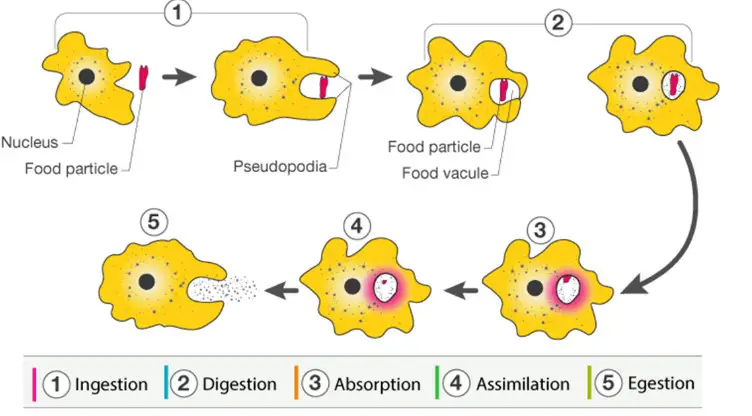Nutrition is a crucial part of the life cycle of any organism. This blog post will explore the differences between holozoic and saprozoic nutrition, two types of nutrition that many organisms use to obtain the nutrients they need to survive. We’ll discuss the definition of each type of nutrition, the organisms that use them, and the differences between the two.
We’ll discuss the definition of each type of nutrition, the organisms that use them, and the differences between the two. Finally, we’ll look at the advantages and disadvantages of each type of nutrition to help you decide which is best for your organism.
Examples of holozoic nutrition

Holozoic nutrition is a form of nutrition that involves ingesting food particles and then breaking them down within the body for energy and nutrients. It is the most common form of nutrition in animals, and is an essential part of their life cycle. On the other hand, saprozoic nutrition involves the absorption of nutrients from decaying organic matter.
It’s the type of nutrition adopted by some bacteria and fungi. The main difference between holozoic and saprozoic nutrition is that in holozoic nutrition, the food must be ingested, while in saprozoic nutrition, the nutrients are absorbed from the environment.
Holozoic nutrition is also usually more efficient than saprozoic nutrition, as it requires more energy input from the organism.
Examples of saprozoic nutrition

Saprozoic nutrition is a form of nutrition where organisms feed on dead and decaying organic matter. This is in contrast to holozoic nutrition, which is where organisms feed on live sources of organic matter.
Saprozoic nutrition is often seen in microorganisms, such as fungi and bacteria, which are capable of breaking down the dead matter into its component parts so they can be used by the organism. This process is known as decomposition and is essential to the natural cycle of life. In addition to microorganisms, larger organisms, such as scavengers, also use saprozoic nutrition as a means of survival.
Advantages and disadvantages of both holozoic and saprozoic nutrition
The difference between holozoic and saprozoic nutrition can be quite confusing to understand. Holozoic nutrition is a type of nutrition that involves the ingestion of food by an organism, followed by digestion and assimilation of the nutrients within the food.
On the other hand, saprozoic nutrition is a type of nutrition that uses the absorption of nutrients from decaying organic matter. Both of these types of nutrition have their own advantages and disadvantages. One major advantage of holozoic nutrition is that it is much more efficient in providing nutrients to an organism than saprozoic nutrition.
This is because the nutrients in the food are already broken down and ready to be used. Additionally, holozoic nutrition is more convenient and requires less energy to obtain food than saprozoic nutrition.
However, the downside of holozoic nutrition is that it can be very expensive and time consuming to obtain food. Additionally, the nutrients within the food may not always be of the highest quality and the organism may not be able to absorb all of the nutrients. On the other hand, saprozoic nutrition is much cheaper and easier to obtain than holozoic nutrition.
Additionally, it may provide higher quality nutrients than holozoic nutrition since the food has had time to decompose and the nutrients have been released. The downside of saprozoic nutrition is that it may take more energy to obtain food and the nutrients may not be readily available for the organism to absorb. In conclusion, both holozoic and saprozoic nutrition have their advantages and disadvantages. It is important to understand the differences between the two before deciding which type of nutrition is best for an organism.
Significance of holozoic and saprozoic nutrition
The difference between holozoic and saprozoic nutrition is an important consideration when studying nutrition and the way that organisms obtain energy and sustenance. Holozoic nutrition is the process by which animals obtain their food by ingesting whole organisms or parts of them.
This type of nutrition is common among animals such as birds, reptiles, and mammals. On the other hand, saprozoic nutrition is the process by which organisms obtain their nutrition by feeding on dead organic matter. This type of nutrition is common among fungi, bacteria, and some protists.
Holozoic nutrition is a more efficient process as the animal obtains nutrients directly from the ingested organism, while saprozoic nutrition requires the organism to break down the dead organic matter before absorbing the nutrients.
Final Touch
In conclusion, holozoic nutrition and saprozoic nutrition differ in their method of obtaining nutrients. Holozoic nutrition involves taking in food and breaking it down to be utilized by the body, while saprozoic nutrition involves the absorption of nutrients from decaying organic matter. Both of these methods are essential for an organism’s survival.
Both of these methods are essential for an organism’s survival. Holozoic nutrition is the most common form of nutrition, while saprozoic nutrition is usually present in organisms that lack the ability to break down their own food.

